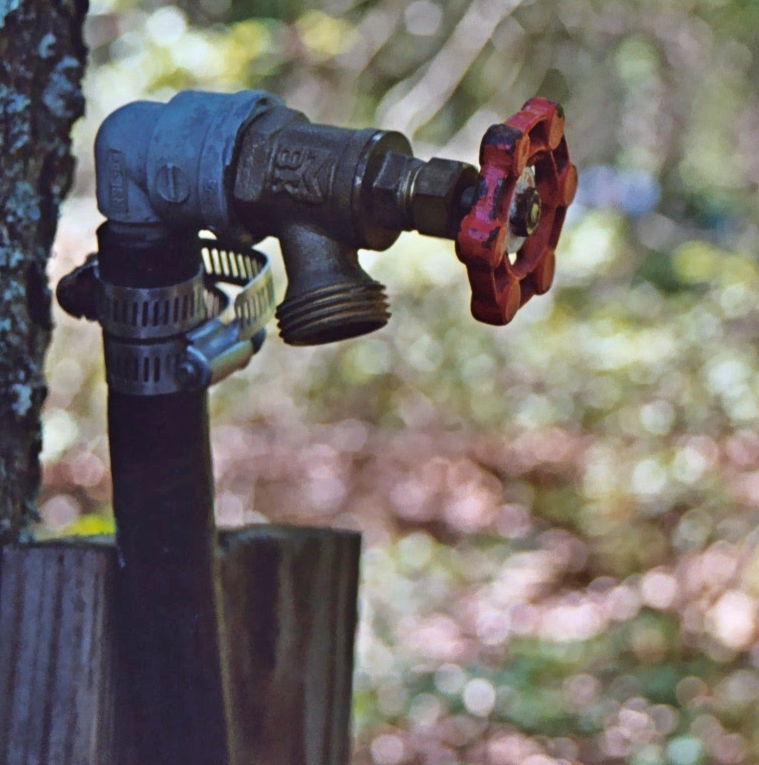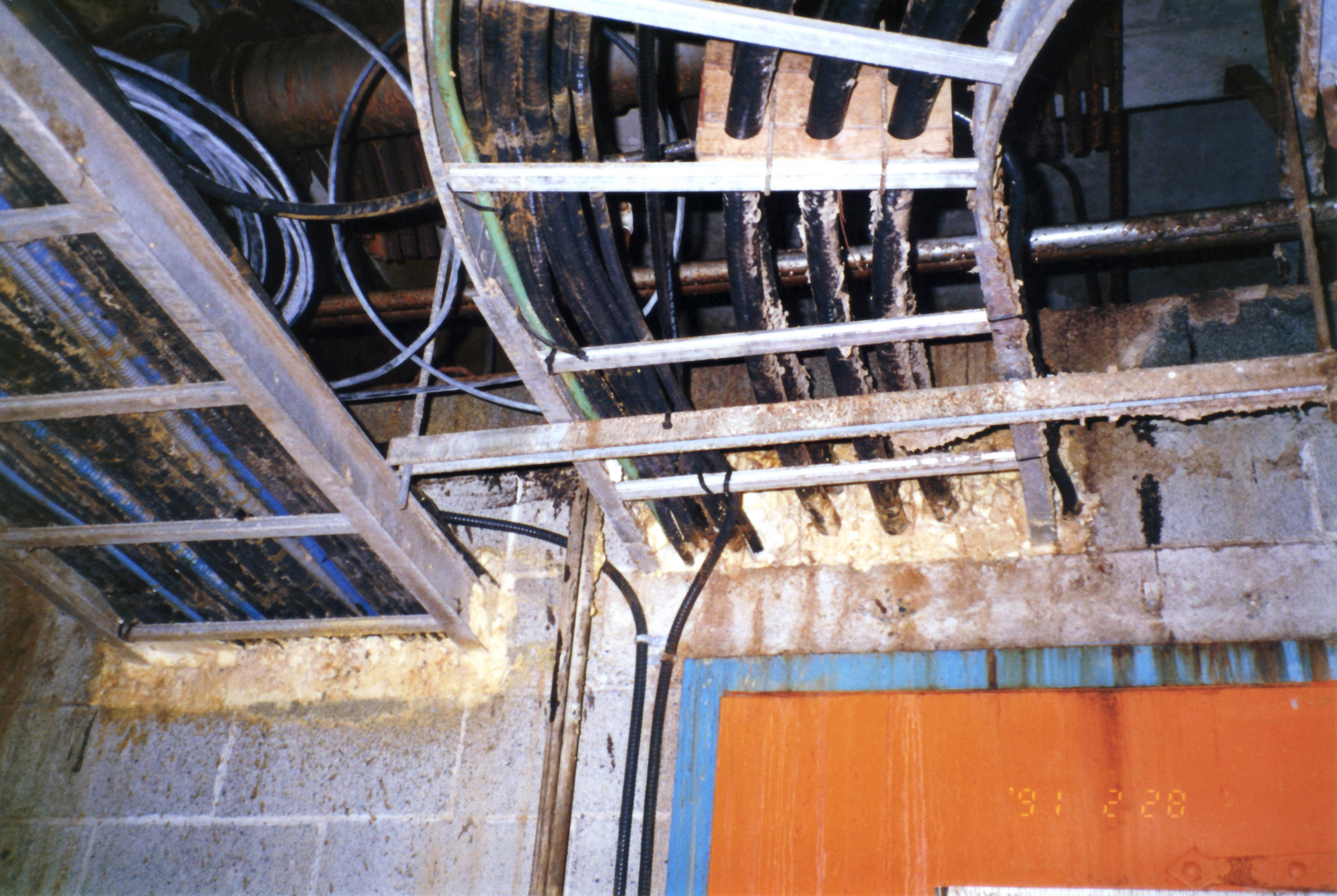|
Hose Bib
A tap (also spigot or faucet: see usage variations) is a valve controlling the release of a liquid or gas. Nomenclature United Kingdom * Tap is used in the United Kingdom and most of the Commonwealth for any everyday type of valve, particularly the fittings that control water supply to bathtubs and sinks. United States * Faucet is the most common term in the US, similar in use to "tap" in British English, e.g. "water faucet" (although the term "tap" is also used in the US). * Spigot is used by professionals in the trade (such as plumbers), and typically refers to an outdoor fixture. * Silcock (and sillcock), same as "spigot", referring to a "cock" (as in stopcock and petcock) that penetrates a foundation sill. * Bib (bibcock, and hose bib or hosebibb), usually a freeze-resistant version of a "spigot". * Wall hydrant, same as "hosebibb". * Tap generally refers to a keg or barrel tap, though also commonly refers to a faucet that supplies either hot or cold water and no ... [...More Info...] [...Related Items...] OR: [Wikipedia] [Google] [Baidu] |
Pressure Balanced Valve
A pressure-balanced valve provides water at nearly constant temperature to a shower or bathtub, despite pressure fluctuations in either the hot or cold supply lines. If, for example, someone flushes a toilet while the shower is in use, the fixture suddenly draws a significant amount of cold water from the common supply line, causing a pressure drop. In the absence of a compensating mechanism, the relatively higher pressure in the hot water supply line will cause the shower temperature to rise just as suddenly, possibly reaching an uncomfortable or even dangerous level. Conversely, if someone opens a hot water faucet elsewhere, the relatively higher pressure in the cold water supply line will cause the shower temperature to drop suddenly. This is described in US patent 3674048. The pressure-balanced shower valve compensates for changes in water pressure. It has a diaphragm or piston inside that reacts to relative changes in either hot or cold water pressure to maintain balanced p ... [...More Info...] [...Related Items...] OR: [Wikipedia] [Google] [Baidu] |
Fuel Gas
Fuel gas is any one of a number of fuels that under ordinary conditions are gaseous. Most fuel gases are composed of hydrocarbons (such as methane or propane), hydrogen, carbon monoxide, or mixtures thereof. Such gases are sources energy that can be readily transmitted and distributed through pipes. Fuel gas is contrasted with liquid fuels and from solid fuels, although some fuel gases are Liquefaction of gases, liquefied for storage or transport (for example, autogas). While their gaseous nature has advantages, avoiding the difficulty of transporting solid fuel and the dangers of spillage inherent in liquid fuels, it also has limitation. It is possible for a fuel gas to be undetected and cause gas explosion. For this reason, odorizers are added to most fuel gases. The most common type of fuel gas in current use is natural gas. Types There are two broad classes of fuel gases, based not on their chemical composition, but their source and the way they are produced: those found n ... [...More Info...] [...Related Items...] OR: [Wikipedia] [Google] [Baidu] |
Ball Valve
A ball valve is a flow control device which uses a hollow, perforated and pivoting ball to control fluid flowing through it. It is open when the ball's hole is in line with the flow inlet and closed when it is pivoted 90-degrees by the valve handle, blocking the flow. The handle lies flat in alignment with the flow when open, and is perpendicular to it when closed, making for easy visual confirmation of the valve's status. The shut position 1/4 turn could be in either clockwise or counter-clockwise direction. Ball valves are durable, performing well after many cycles, and reliable, closing securely even after long periods of disuse. These qualities make them an excellent choice for shutoff and control applications, where they are often preferred to gates and globe valves, but they lack the fine control of those alternatives, in throttling applications. The ball valve's ease of operation, repair, and versatility lend it to extensive industrial use, supporting pressures up to ... [...More Info...] [...Related Items...] OR: [Wikipedia] [Google] [Baidu] |
Gas Taps
Gas is one of the four fundamental states of matter (the others being solid, liquid, and plasma). A pure gas may be made up of individual atoms (e.g. a noble gas like neon), elemental molecules made from one type of atom (e.g. oxygen), or compound molecules made from a variety of atoms (e.g. carbon dioxide). A gas mixture, such as air, contains a variety of pure gases. What distinguishes a gas from liquids and solids is the vast separation of the individual gas particles. This separation usually makes a colourless gas invisible to the human observer. The gaseous state of matter occurs between the liquid and plasma states, the latter of which provides the upper temperature boundary for gases. Bounding the lower end of the temperature scale lie degenerative quantum gases which are gaining increasing attention. High-density atomic gases super-cooled to very low temperatures are classified by their statistical behavior as either Bose gases or Fermi gases. For a comprehensive listi ... [...More Info...] [...Related Items...] OR: [Wikipedia] [Google] [Baidu] |
Draft Beer
Draught beer, also spelt draft, is beer served from a cask or keg rather than from a bottle or can. Draught beer served from a pressurised keg is also known as Name Until Joseph Bramah patented the beer engine in 1785, beer was served directly from the barrel and carried to the customer. The Old English ' ("carry; pull") developed into a series of related words including ''drag'', ''draw'', and ''draught''. By the time Bramah's beer pumps became popular, the use of the term ''draught'' to refer to the acts of serving or drinking beer was well established and transferred easily to beer served via the hand pumps. In time, the word came to be restricted to only such beer. The usual spelling is now "draught" in the United Kingdom, Ireland, Australia, and New Zealand and more commonly "draft" in North America, although it can be spelt either way. Regardless of spelling, the word is pronounced or depending on the region the speaker is from. Canned draught is beer served from a ... [...More Info...] [...Related Items...] OR: [Wikipedia] [Google] [Baidu] |
Ballcock
A ballcock (also balltap or float valve) is a mechanism or machine for filling water tanks, such as those found in flush toilets, while avoiding overflow and (in the event of low water pressure) backflow. The modern ballcock was invented by José Antonio de Alzate y Ramírez, a Mexican priest and scientist, who described the device in 1790 in the ''Gaceta de Literatura Méxicana''. The ballcock device was patented in 1797 for use in steam engines by Edmund Cartwright. It consists of a valve connected to a hollow, sealed float by means of a lever mounted near the top of the tank. The float is often ball-shaped, hence the name ''ballcock''. The valve is connected to the incoming water supply, and is opened and closed by the lever which has the float mounted on the end. When the water level rises, the float rises with it; once it rises to a pre-set level, the mechanism forces the lever to close the valve and shut off the water flow. This is an example of negative feedback and of ... [...More Info...] [...Related Items...] OR: [Wikipedia] [Google] [Baidu] |
Gears
A gear is a rotating circular machine part having cut teeth or, in the case of a cogwheel or gearwheel, inserted teeth (called ''cogs''), which mesh with another (compatible) toothed part to transmit (convert) torque and speed. The basic principle behind the operation of gears is analogous to the basic principle of levers. A gear may also be known informally as a cog. Geared devices can change the speed, torque, and direction of a power source. Gears of different sizes produce a change in torque, creating a mechanical advantage, through their ''gear ratio'', and thus may be considered a simple machine. The rotational speeds, and the torques, of two meshing gears differ in proportion to their diameters. The teeth on the two meshing gears all have the same shape. Two or more meshing gears, working in a sequence, are called a gear train or a '' transmission''. The gears in a transmission are analogous to the wheels in a crossed, belt pulley system. An advantage of gears is t ... [...More Info...] [...Related Items...] OR: [Wikipedia] [Google] [Baidu] |
Wrench
A wrench or spanner is a tool used to provide grip and mechanical advantage in applying torque to turn objects—usually rotary fasteners, such as nuts and bolts—or keep them from turning. In the UK, Ireland, Australia, and New Zealand ''spanner'' is the standard term. The most common shapes are called ''open-ended spanner'' and ''ring spanner''. The term ''wrench'' is generally used for tools that turn non-fastening devices (e.g. tap wrench and pipe wrench), or may be used for a monkey wrench—an adjustable pipe wrench. In North American English, ''wrench'' is the standard term. The most common shapes are called ''open-end wrench'' and ''box-end wrench''. In American English, ''spanner'' refers to a specialized wrench with a series of pins or tabs around the circumference. (These pins or tabs fit into the holes or notches cut into the object to be turned.) In American commerce, such a wrench may be called a ''spanner wrench'' to distinguish it from the British sense ... [...More Info...] [...Related Items...] OR: [Wikipedia] [Google] [Baidu] |
Building Code
A building code (also building control or building regulations) is a set of rules that specify the standards for constructed objects such as buildings and non-building structures. Buildings must conform to the code to obtain planning permission, usually from a local council. The main purpose of building codes is to protect public health, safety and general welfare as they relate to the construction and occupancy of buildings and structures. The building code becomes law of a particular jurisdiction when formally enacted by the appropriate governmental or private authority. Building codes are generally intended to be applied by architects, engineers, interior designers, constructors and regulators but are also used for various purposes by safety inspectors, environmental scientists, real estate developers, subcontractors, manufacturers of building products and materials, insurance companies, facility managers, tenants, and others. Codes regulate the design and construction of s ... [...More Info...] [...Related Items...] OR: [Wikipedia] [Google] [Baidu] |
Romance Languages
The Romance languages, sometimes referred to as Latin languages or Neo-Latin languages, are the various modern languages that evolved from Vulgar Latin. They are the only extant subgroup of the Italic languages in the Indo-European language family. The five most widely spoken Romance languages by number of native speakers are Spanish (489 million), Portuguese (283 million), French (77 million), Italian (67 million) and Romanian (24 million), which are all national languages of their respective countries of origin. By most measures, Sardinian and Italian are the least divergent from Latin, while French has changed the most. However, all Romance languages are closer to each other than to classical Latin. There are more than 900 million native speakers of Romance languages found worldwide, mainly in the Americas, Europe, and parts of Africa. The major Romance languages also have many non-native speakers and are in widespread use as linguae francae.M. Paul Lewis,Summary by l ... [...More Info...] [...Related Items...] OR: [Wikipedia] [Google] [Baidu] |

.jpg)




